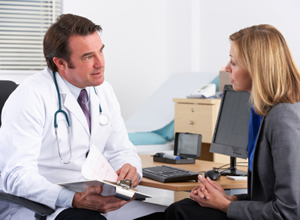Osteoporosis – Are You At Risk?
With osteoporosis your bones become fragile and brittle and so are easily broken and as more severe bone loss occurs, then even minor accidents can result in fractures.

There is no doubt that osteoporosis is a disabling disease with one third of women and 8 per cent of men having a lifetime risk of developing it.
Osteoporosis is a gradual weakening of the bones caused by a reduction in bone density. Unfortunately it has virtually no outward symptoms until it is well established, hence it’s nickname of the ‘silent killer’.
With osteoporosis your bones become fragile and brittle and so are easily broken. As more severe bone loss occurs, then even minor accidents can result in fractures, most frequently in the spine, wrist, hip and pelvis.
If the condition becomes advanced, and is untreated, then the vertebrae of the spine are prone to compression fractures, which affect surrounding nerves and organs.
This also results in a loss of height for which the old nickname was ‘the dowager’s hump’ as it was frequently seen in the bent over posture of old ladies. It is also accompanied by chronic pain.
Risk Factors
Women are four times more likely than men to develop osteoporosis, and women over 55 are the most susceptible, although younger women can also be at risk depending on certain factors.
It has also more recently been seen that more men are being diagnosed with osteoporosis. It is hard to know whether this is because they are now more susceptible because of the increased hormone levels in the water and food chain, or because they have not been diagnosed.
As the greatest number of cases are seen in women, many doctors have not thought to link broken bones in men to osteoporosis. A simple scan by ultrasound can diagnose this and if a man is subject to bones breaking more easily then this would be a good check to make.
Knowing your medical history is important as osteoporosis often runs in families, but if this is not the case for you then it is the declining hormone levels as we age that are an important factor in whether or not you develop osteoporosis.
Both oestrogen and progesterone are essential for bone building and production of both these slow down as we get older. Normal bone tissue is broken down by cells called osteoclasts (a process which needs oestrogen) and rebuilt by osteoblasts. (which needs progesterone).
As we age, the rate at which the bone is broken down exceeds that at which it is built up and this leads to bone loss.
It can also affect younger women who have had a surgical menopause through having a hysterectomy and also anyone who has undertaken severe dieting or has a history of anorexia or bulimia. There is a severe mineral loss involved in these conditions during the teens and twenties and this can do permanent damage to the bones.
There are a number of ways to deal with osteoporosis and three of the important ones in the prevention and management of this condition are stress management, diet and exercise.
Low levels of exercise can make the condition worse, and there are many good books on nutrition on this subject, but it will certainly be worsened by a diet high in animal protein, too much salt, heavy metal toxicity, cigarettes, numerous pregnancies and prolonged breast feeding.
Being aware of your own risk factors will enable you to take charge of your health and minimise the effect osteoporosis may have on you.
Helpful information:
Women need both progesterone and oestrogen for strong bones so achieving hormone balance is key and it is progesterone that is responsible for bone building.


















